If you’re reading this, it’s likely that you’re wondering whether you’re currently suffering from piriformis syndrome – or you’ve already been diagnosed with this problem. Today, we’re going to talk about what this condition is and reveal the best piriformis syndrome treatment in our Ultimate Guide to Piriformis Syndrome!
You should know before you read this: YOU ARE NOT ALONE!
Although the vast majority of the general public have never even heard of piriformis syndrome, there are a significant number of people who suffer from this problem.
My name is Will Harlow and I help people who suffer from sciatica and piriformis syndrome. Getting people with back pain, sciatica and piriformis syndrome out of pain and back to the things they love is my specialty.
And I’m going to show you a few ways you can do that today.
But first, let’s talk a little about the piriformis and this infamous condition called piriformis syndrome…
Before we dive in, please be aware that we are part of the Amazon Affiliate programme. This page may contain Amazon affiliate links, so if you choose to purchase a product for your sciatica that we recommend through a link on this page, we will receive a small commission at no extra cost to you. This helps us keep Overcome Sciatica alive! Thank you for your support. Please be assured that we only ever recommend products that we truly believe can help.
Please note: The exercises in this article are informational in nature and not to be taken as a “prescription” of any kind. Please ensure you have been thoroughly assessed by a healthcare professional before commencing this or any new exercise programme.
What is the “Piriformis”?
The piriformis is a small muscle that lies deep within your buttock. It plays a critical role in stabilising your pelvis when walking, while also helping to externally rotate your hips and keep them level.
If you didn’t have a piriformis, you would struggle to maintain a straight pelvis and your hips would drop to one side with each step. It’s a small but very important muscle in your pelvic region, and in most people it does its job without much bother.
The piriformis runs from your sacrum— the bony area where the base of your spine meets your pelvis—to the top of your thigh bone.
When it contracts, it pulls the thigh bone out – which rotates the thigh bone outwards.
What is piriformis syndrome?
In most people, the sciatic nerve passes right by the piriformis muscle. For these lucky people, piriformis syndrome is very rare.
However, in around 10% of the population, the sciatic nerve actually passes THROUGH the piriformis muscle. In these people, when the piriformis contracts or spasms, it can sometimes compress the sciatic nerve, resulting in pain that starts in your buttock and can run all the way down your leg.
We call this condition piriformis syndrome, and as anyone who has suffered from it can tell you, it is extremely painful!
Here’s an image to help describe how the piriformis can “PINCH” the sciatic nerve and cause piriformis syndrome:
Some people think of sciatica and piriformis syndrome as the same thing; technically, sciatica describes the SYMPTOM, while piriformis syndrome can be the CAUSE of the symptom.
For more on this, see one of my latest videos on piriformis syndrome below:
What Causes Piriformis Syndrome?
Piriformis syndrome can be caused by a variety of factors. It is usually triggered over a long period of time rather than in an isolated incident.
Some of the common causes of piriformis syndrome include too much repetitive activity all in one go. Another common cause of piriformis syndrome is prolonged sitting; like in an office job.
Some of the repetitive actions that can cause piriformis syndrome include running and walking, which makes piriformis syndrome a very common running injury.
Now, running and walking aren’t going to cause piriformis syndrome on their own. What causes the issue is something called a “muscle imbalance” (like having weak gluteal muscles in the buttocks) which leads to tightness in parts of the lower limb.
If this tightness affects the piriformis, it can lead to piriformis syndrome over a long period of time.
Sitting for long periods of the day can cause piriformis syndrome due to the weakening and lengthening of the gluteal muscles. When this occurs, the piriformis is made to work extra hard to compensate for the weakness in other areas, which can eventually lead to muscle spasm in the piriformis.
Put simply, as your piriformis is a small muscle, it quickly gets severely fatigued from all that overtime work!
Again, look at the picture above and notice how SMALL the piriformis is compared to the other muscles around it. Now imagine you’re asking the piriformis to do the work of the muscles around it. It’s no wonder it gets fatigued so quickly!
How to Identify Piriformis Syndrome
A diagnosis of piriformis syndrome is usually made based upon symptoms alone, so there often is no need for expensive scans.
Besides, an MRI may not even be able to pick up piriformis syndrome as “tightness” does not show on an MRI image.
Now, let’s talk about the common symptoms that someone with piriformis syndrome may experience.
Some common symptoms of piriformis syndrome include:
- Pain in the buttock on one side when sitting: This pain usually occurs right in the centre of the buttock, rather than under a buttock crease or over to one side. If you’re a runner and you’ve developed pain not within but just under the buttock, you might be suffering from a hamstring tendinopathy, rather than piriformis syndrome.
- Pain that eases when you start walking or running, but gets worse again 15-20 minutes into the activity: Usually, piriformis syndrome affects people more when sitting directly on the problem area. If getting up and walking around eases your pain, but then it comes back again on long walks or runs, it could be piriformis syndrome.
- Pain running down the back of your leg, but no back pain: Of course, it’s possible to have piriformis syndrome AND back pain – but most people whose leg pain is caused by their back will experience back pain and sciatica at the same time. Also, if you have leg pain that is around the front or the side of your leg, it’s probably NOT piriformis syndrome as the piriformis will only compress the sciatic nerve (not any of the other nerves in your leg).
- Tenderness in the centre of your buttock: When you press on the middle of your buttock, it is likely to feel sore if you have piriformis syndrome.
In the above photo, you can see the locations of the common points of tenderness for someone suffering from piriformis syndrome. If you press on these areas and they are super tender, it’s possible that you could have piriformis syndrome.
How to Treat Piriformis Syndrome
For most people, resting is usually not enough to conquer piriformis syndrome.
This is especially true if the problem is caused by bad pelvic alignment or a muscle imbalance. For people who opt for rest only, as soon as they start the activity up again their pain is likely to return.
But don’t worry – piriformis syndrome is curable, and you almost certainly will not need surgery or injections to experience relief!
The piriformis syndrome treatment that you choose will depend largely upon what’s caused your piriformis syndrome in the first place. Let’s have a look at each cause and then discuss the treatment options available to you.
Before we jump in, check out my top recommended piriformis treatment programme below:
Are You Looking for RAPID Relief from Sciatica?
My good friend, colleague and fellow international sciatica expert, Dean Volk, has a brand new piriformis syndrome relief video course available – and I’m delighted to be an official sponsor!
Check out Dean Volk’s “Kicking Sciatica OUT of the Butt!” Online Pain Relief Course Here!
I can proudly recommend Dean and his course for piriformis syndrome sufferers – because I’ve seen his incredible results first-hand. You can check out his course (and get lifetime access to the videos and bonus content) by clicking HERE.
For Office Workers
If you spend 8 hours a day sitting in an office, you count yourself as unfit and possibly overweight… chances are your sitting has contributed to the development of piriformis syndrome.
As I mentioned earlier, spending prolonged periods of time sat down can cause a chronic compression on the sciatic nerve.
Once aggravated, the sciatic nerve and piriformis can remain inflamed and tender for a long period of time unless the correct measures are taken to relieve that pressure. For these people, one of the mainstays of piriformis syndrome treatment should be relieving the pressure from the piriformis when sat down.
Let’s discuss a couple of ways to do exactly that!
Piriformis Syndrome Treatment for Office Workers
How to Sit with Piriformis Syndrome:
You may want to consider using a ring cushion to sit on when you are at work.
This can alleviate pressure from the affected buttock and significantly improve your comfort at work. What’s more, you’ll be maximizing the chances of your piriformis syndrome recovering quicker by avoiding the number one aggravation for your problem – pressure on the affected area.
Here is a fantastic option that I’ve recommended to clients before to great success:
Supportiback® | The #1 Donut Seating Cushion
This gel cushion allows excellent comfort at work while relieving the pressure on your piriformis. It is discrete and portable, making it a great choice for the office.
Click HERE to view the product
The following exercise may also help – but be assessed by a healthcare professional before trying it.
This exercise is designed to relieve pressure from the piriformis when sitting and is a vital part of piriformis syndrome treatment for those who have an office job.
Piriformis Syndrome Treatment Exercise – The Lying Piriformis Stretch
- Laying on the floor, cross your affected leg over your non-affected leg (in the picture, the right leg is the affected leg).
- Turn the leg outwards as far as is comfortable.
- Reach through the unaffected leg with your hands and GENTLY pull upwards.
- You will feel a stretch in your buttock (on the right leg in the picture).
- Hold for 30 seconds.
First of all, try this stretch on your affected side. However, for many people, stretching the affected side makes the problem worse. If you fall into that category of people, you could try the following:
Stretching the unaffected side instead!
This sounds like unusual advice – but it can actually help to relieve tension on the pelvis as a whole and help muscle imbalances directly, relieving some of the pressure on the affected piriformis. In this way, stretching the opposite side can be an effective piriformis syndrome treatment.
You can see a video demonstration of this exercise here:
Piriformis Syndrome Treatment for Non-Athletes/Over 50’s
Unfortunately, while being over 50 or inactive doesn’t increase the chances of suffering from piriformis syndrome, as we age or become inactive we lose muscle strength in key areas around the pelvis.
This leaves you at a high risk of suffering from a muscle imbalance that can cause piriformis syndrome over time.
Luckily, this type of imbalance can be remedied with some specific targeted exercises and may be the best way to start piriformis syndrome treatment for at least 80% of over-50’s.
Now, the only problem with this type of piriformis syndrome treatment is that it can take a long time to feel a positive effect – I’m talking probably 8-12 weeks of daily work.
But don’t worry – it will only take 5 minutes of commitment to your targeted exercises each day and the results should be well worth it in the end.
The biggest challenge most of my clients face when they try to do this kind of thing independently is becoming disheartened after seeing no results in the first 4 weeks or so, then giving up.
I want to draw your attention to this so hopefully you will remember these words if you become frustrated and persevere with your piriformis syndrome treatment!
Now, let’s have a look at the key exercises you should be doing for piriformis syndrome if you are over-50 or would count yourself as mostly “inactive”.
Piriformis Syndrome Treatment for Over-50’s
For people in this group, your priority should be strengthening the GLUTEAL muscles in the painful AND NON-PAINFUL buttocks.
These are the gluteal muscles:
As you can see, they are bigger and stronger than the piriformis and we need to “wake them up” so they start doing their job properly again! This will allow your poor, overworked piriformis chance to relax and recover.
While there are hundreds of exercises to choose from to achieve this goal, you only really need a handful to get a good result – the video below shows one of such exercises to strengthen your gluteal and take some pressure off that piriformis.
Please note: Not all of these exercises will be suitable for everyone. Check with your healthcare professional first.
Exercise #1 – Hip Abduction
Make sure you are keeping your to leg IN LINE with your body. It’s easier for you to allow your leg to come forward as you do this exercise, which makes it super-easy… But you’ll be work the WRONG muscles!
I recommend most people continue this exercise until they get a “deep working ache” in the hip, then having a 1 minute rest, then repeating that 3 times daily.
Exercise #2 – Standing Hip Squeezes
- Start standing holding onto a chair or a work top
- Stand just on your good leg
- Take the bad leg OUT and BEHIND YOU as shown in the picture
- When you go as far as you can, SQUEEZE your buttock at the end point for 2 seconds
- Slowly allow your leg to return to the centre
- Repeat this process until you feel a “deep working ache” in your hip
- Rest for 1 minute, then repeat 3 times.
The above exercises can be done each day, either at different times or together.
Piriformis Syndrome Treatment for Runners or Athletes
Runners and athletes will probably also benefit from the strengthening exercise above, but in this case it may be better to be assessed by a professional who can work out the muscle imbalances causing your particular problem.
A note of caution: From my experience, runners and athletes LOVE to “release” muscles and “trigger point” painful areas!
For this reason, the piriformis syndrome exercises to avoid for runners and athletes are heavy foam rolling and intense stretching of the piriformis.
Here’s why:
When you insist on pummelling a tight muscle with a foam roller or even a golf ball, if you are too rough then it can cause the muscle to tighten up even further.
This picture below is a great example of a method that is likely to IRRITATE a piriformis and could make your symptoms WORSE:
DON’T DO THIS! YOU’RE GOING TO MAKE IT WORSE!
What’s more, where the sciatic nerve sits in the buttock is actually quite close to the surface of your skin. If you pummel and rough massage that area, you risk directly irritating the sciatic nerve even further, leading to worse symptoms than before.
The same is true of stretching. When you aggressively stretch a painful area, you often increase the compression on the nerve and worsen your symptoms.
A great alternative is to try stretching the opposite leg instead, gently releasing any tension on your non-painful leg.
One alternative option is to try the exercise from the video below instead, where I describe how to effectively stretch for sciatica relief – this video is equally applicable for many with piriformis syndrome, but get checked out by your own healthcare professional first:
I know that it may FEEL like your tight buttock needs a good stretch to relieve it, but most people will be far better off going gently, stretching the opposite leg, and opting for strengthening exercises instead in most instances.
As I said previously, runners will definitely need to fix weak gluteals too (which are often the reason behind the start of piriformis syndrome).
The exercises you’ll need as a runner or athlete will be different to the ones I’d give a deconditioned 75 year-old.
Try the following gluteal exercises instead:
The exercises provided on this page for informational purposes only and are not designed to be a ‘prescription’ of any kind. Be sure to check with your healthcare provider before you begin any new exercise programme.
Exercise #1 – The Crab Walk
The Crab Walk is a fantastic glute strengthening exercise for the athletic population because it is both challenging and effective.
It is important to walk in both directions to strengthen both the right and left sides.
Watch your technique – it’s easy to extend the knees too much and take the pressure OFF the gluteals – if it burns in the buttocks and feels difficult, YOU’RE DOING IT RIGHT!
If it feels super-easy… Time to either look at your technique, or change the resistance.
Remember, for most people it is important to keep going until they get that “deep working ache”, then take a minute’s rest – repeating 3 times over.
Exercise #2 – Single Leg Sit-to-Stand
For this exercise, it is important to watch technique very closely. This is an exercise that gets more challenging the SLOWER you perform it.
The single leg sit-to-stand is a great way to work the hips, gluteals and quads (knee muscles). It is one of the key exercises I would recommend to almost any runner or athlete (as long as they do NOT have knee problems) because it addresses problems with control and muscle strength very quickly.
Here’s a video on how to perform is correctly:
Now, you need to be aware of one thing – there’s a really common way to CHEAT on this exercise!
Look at the image below:
Can you see how in the picture on the right, the lady’s knee falls inwards?
That’s because the gluteal muscles aren’t working hard enough!
When this happens, we aren’t getting the same effect that we would if we perform the exercise like in the image on the left. Keep your pelvis straight; use a mirror if possible to watch your technique.
With this exercise, continue until you feel a deep working ache in your hip and knee muscles. Pause, have a break for a minute, then repeat 3 times over.
Next Steps
Now you understand the basic components of a program designed for piriformis syndrome treatment, you can see how it is possible to get positive effects by following a home exercise programme. For most of these methods, it’ll be about 2-3 months before one feels significant improvements, although the stretches may help within the first few sessions.
For those who want a more robust and personalised piriformis syndrome relief programme, check out the course below:
Are You Looking for RAPID Relief from Piriformis Syndrome?
My good friend, colleague and fellow international sciatica expert, Dean Volk, has a brand new sciatica and piriformis syndrome relief video course available – and I’m delighted to be an official sponsor!
Check out Dean Volk’s “Kicking Sciatica OUT of the Butt!” Online Pain Relief Course Here!
I can proudly recommend Dean and his course for sciatica sufferers – because I’ve seen his incredible results first-hand. You can check out his course (and get lifetime access to the videos and bonus content) by clicking HERE.
Conclusion
Now you’ve got all the tools to get your piriformis syndrome treatment under way, the key thing you need to remember is that it takes persistence to get rid of piriformis syndrome!
Your piriformis syndrome didn’t start overnight – it would have taken several months to really become a problem, and that means it’ll take an equal amount of time to fully recover from. Don’t get frustrated – keep going and you’ll get the results in the end!
The information on Overcome Sciatica should never be used as a substitute for medical advice from a doctor. Never put into action any tips or techniques from Overcome Sciatica without checking with your doctor first. Please see full terms of use here.

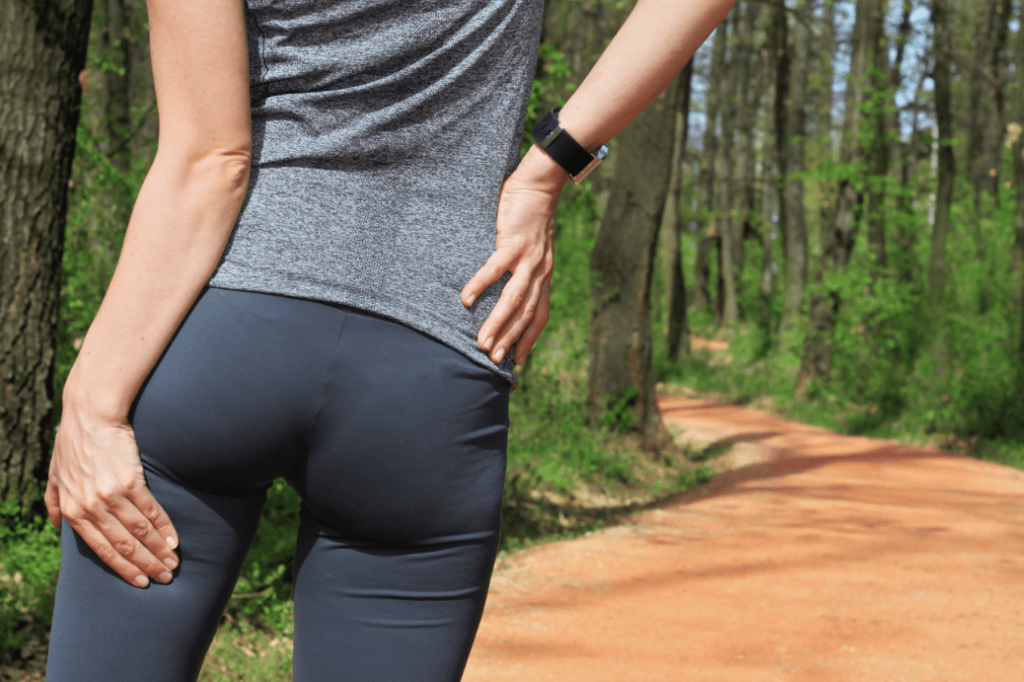
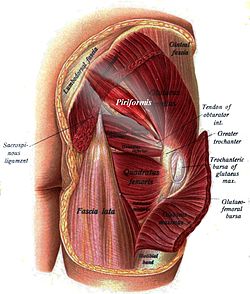
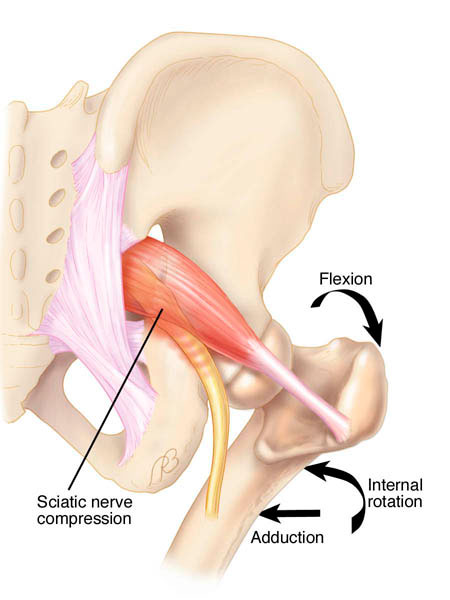
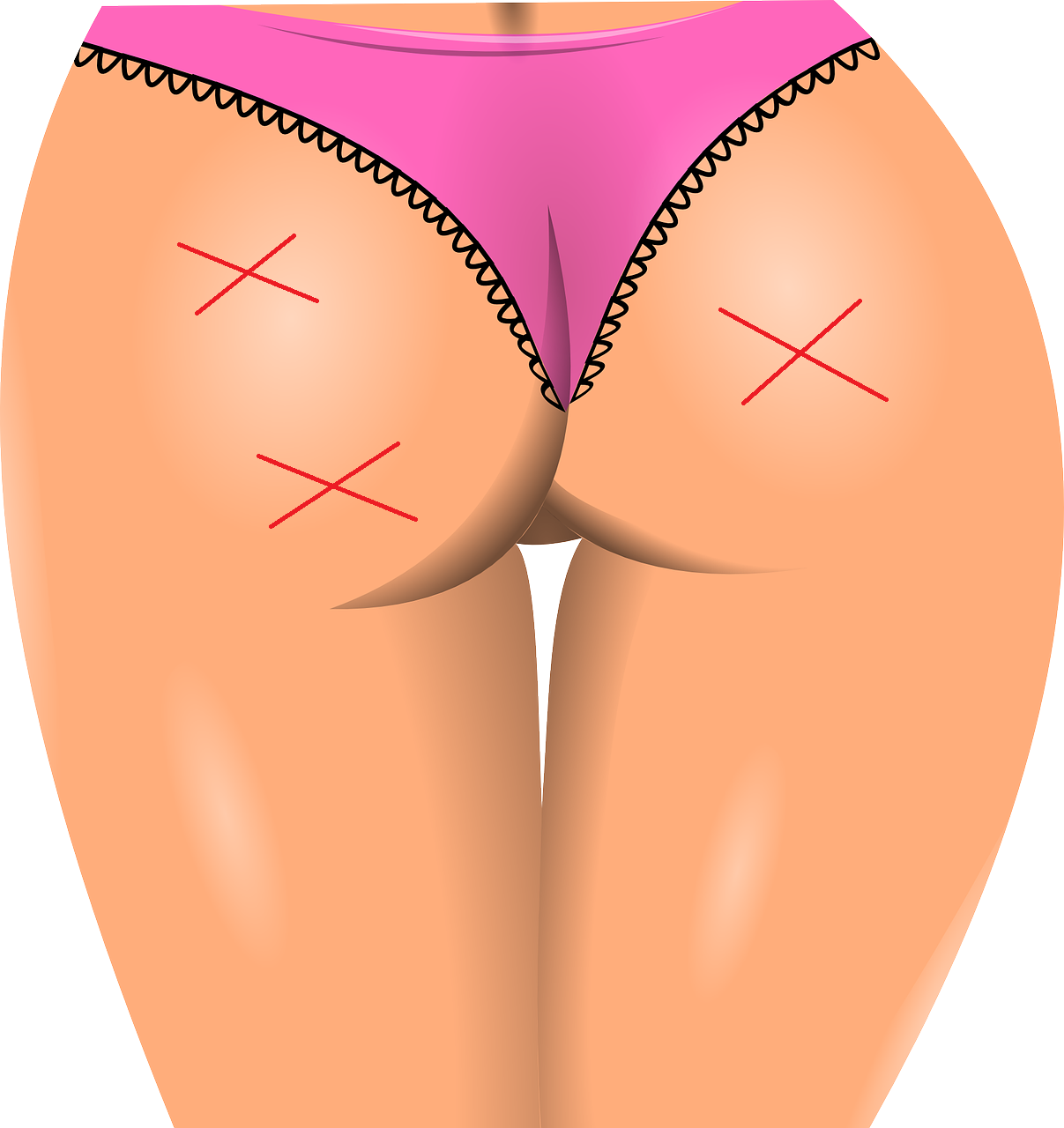



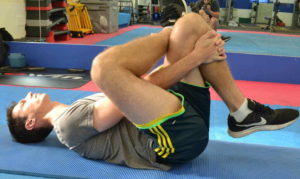
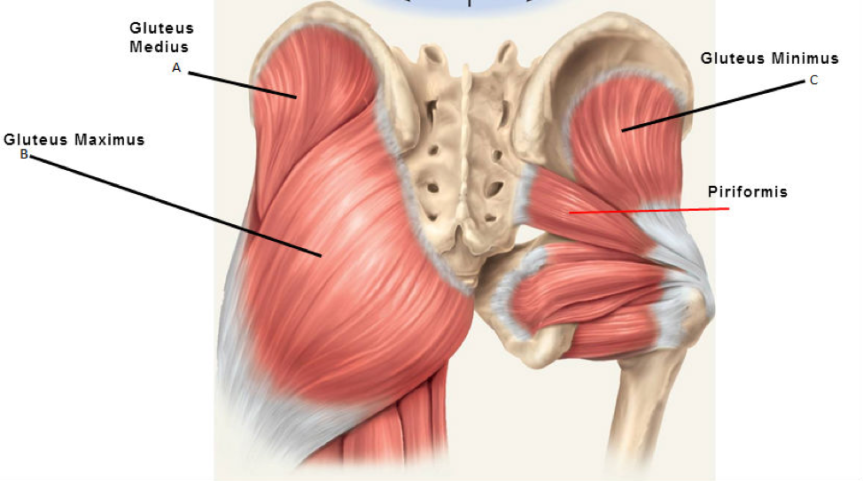



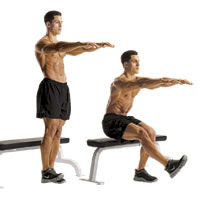

Brilliant article Will. So much helpful Info. Ive suffered with Piriformis Syndrome for a year and struggled to find exercises that help!!
Thanks for your comment, Cheryl. Really happy you find the advice useful 🙂
Very clear and informative article . Thank you. I do have a question I hope you can help with. I have been trying to find information about what type of cardio workouts might be ok or good for a person with periformis syndrome. I am well over 50 and currently out of shape…used to be in very good shape and want to be again.
Hello I’m so glad I found your website I have suffered with PS for some years I have a sitting job although rarely at my desk until lockdown. Recently I completed couch to 5k and have been running for 30 mins (slow jog) 3 times a week for a few weeks but now have had to stop although didn’t hurt when running it must have inflamed the situation and now in a lot of pain. I am working on the pain free side hoping for some relief soon